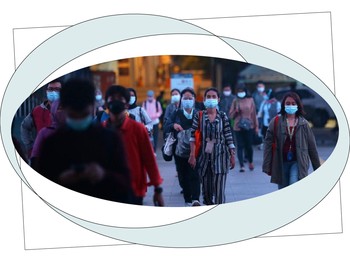Since the pandemic strikes, many countries are suffering and struggling to tackle the spreading virus. Economic collapse, health infrastructures shortage, and increasing poverty, are some of the issues caused by this global disaster. Another important problem that arises, is the decreasing numbers of global life expectancy rates. More than five million lives were lost due to Covid-19. And this is only the official numbers, the exact ones are probably even higher.
Rarely discussed, this issue has a bigger implication to the world population. According to a study conducted by Aburto et al (2021), the pandemic has caused the biggest decrease in life expectancy since the second world war. They gathered data from 29 countries including Europe, US, and Chile. The biggest decline was among males in the US, with reductions of more than one year.
For Western European countries like Spain and England, these numbers were the biggest decrease since World War 2. In the US, the rising numbers of death rates happen to those in the productive age and below 60 years old. While in Europe, death rates among people above 60 years old are the highest. What really surprised researchers is the sheer magnitude of the downfall. They did not expect that these numbers would go this low.
But what does this mean? This decrease has wiped out years of research progress in life expectancy rates. According to Dr. Ridhi Kashyap, co-lead author of this study, these results highlight the significant impact of Covid-19 to the global demographic population.
By extension, life expectancy rates are widely used as population health indicators. With the significant decrease of life longevity of the population, it indicates that the overall world population's health quality is also decreasing. Bilas, Franc, and Bosnjak (2014) also stated that life expectancy is an important factor in assessing economic and social development of a country or a region. Good health implies socioeconomic conditions such as poor education level, reduction of unemployment and insecurity, and improvement of life conditions.
When life expectancy rates significantly decrease, scientists are urging governments to collect and publish more data in a wider range of countries, including developing countries to better understand the impact on a global scale.



